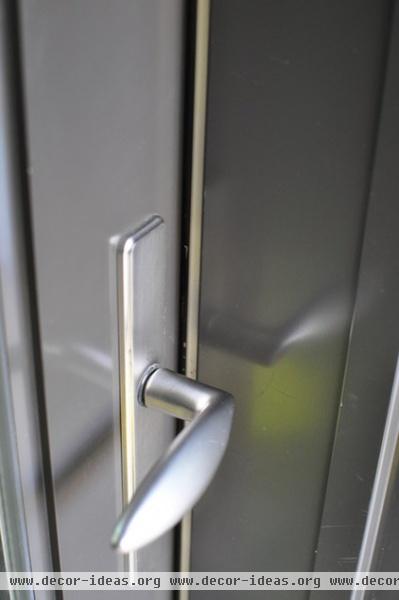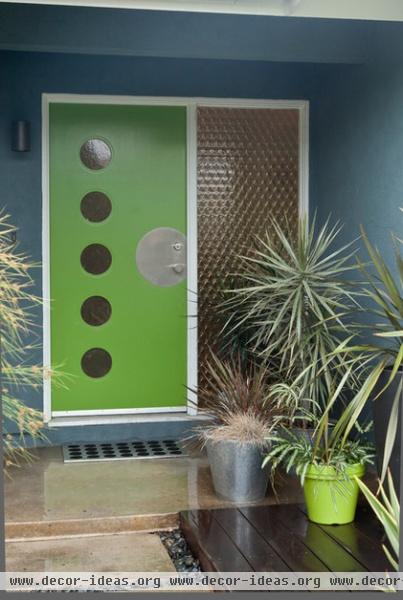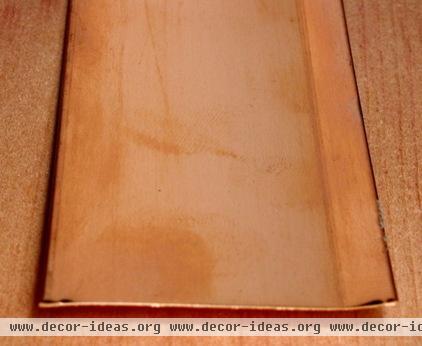Lower Your Heating Bills With Some Simple Weather Stripping
http://decor-ideas.org 11/11/2013 13:20 Decor Ideas
Leaky spots around windows and doors are notoriously big problems for homeowners in locations with cold winters and humid summers, and they can lead to bigger problems. Even before adding insulation to your house, the most important step in making your house more comfortable is controlling air movement. The principle is pretty simple: plug up the holes in your house. Since doors and windows are the biggest holes in a home, weather-stripping is where your efforts should begin. Weather-stripping is a great DIY project too, since it involves just a very basic knowledge of tools.
Below you'll find the best ways to weather-strip for reduced drafts and leaks this winter.

How to Check for Drafts
If it's already getting cold at night where you live, you may be able to put your hand at different spots around your front door to see where there are drafts. If not, darken the interior of the house during the day and look for light around doors and windows. If you see light coming through spaces around the door, you need to improve your door's weather stripping.
You'll also want to check the compression abilities of existing weather stripping. Go outside and close and latch each door. See if the weather seal compresses. The tan strip in this photo is the weather seal. You should see the seal compress about halfway when the door closes. Sometimes the seal is there but does not compress enough to be effective.
You can tell that weather-stripping is compressed enough when you no longer see light coming in around the perimeter. If you see light, you'll need to either enlarge the weather seal or adjust the strike plate on your door to get the door to close tighter. If you replace the weather stripping and your door has a groove, get the type that fits into the groove, since it will last much longer than the peel-and-stick type.

Where to Check for Drafts
Under doors. The underside of the door is a notorious spot for air and water leaks, since the rubber sweeps that form the seal at the threshold wear down over time from rubbing.
If your threshold has large visible screws, you may be able to turn them to adjust part of the threshold upward to get a tight seal. If not, slide on a U-shaped metal sweep, adjust it so the door closes easily but seals well, then screw it into the face of the door to attach it. These sweeps can often be installed without your having to remove the door.

Spring Bronze Weather Strip, 1¾ inches by 100 feet - $156 If you have an older door with no groove, I recommend a classic weather seal. This copper piece gets nailed into the door jamb along the small bent edge, making the large piece flare out. When the door closes, the flap compresses, sealing itself against the door. It doesn't have the insulating characteristics of a silicone weather seal, but it will last forever.
Because doors get a lot of abuse, a quality weather seal means you won't be redoing this every year. If you do use the peel-and-stick variety, make sure to clean the door and jamb well before applying, both where the piece will attach and where it will hit the door.

Around windows. Double-hung windows have two sashes that move up and down. Leaks can happen around the sides, where the sashes meet each other and where they hit the sill. You won't be able to use the light trick for windows. However, a wet hand can work, since it makes it easier to feel a slight draft, especially if you turn on bath fans and the kitchen hood to depressurize the house. You can also move an incense stick around the edge of your windows and watch for the smoke to waver.
The copper strip above will work for the sash-sill and sash-sash contact; the nylon brush type is good for where the sashes slide against the jamb. Once you've upgraded the weather stripping on your windows, consider adding storm windows to the exterior if you have single-pane windows.

Other spots. So now you've stopped the leaks at your doors and windows, and you're looking for a new challenge. There are many other places where air leaks into and out of your house, and this doesn't affect just the temperature of your home. Warm air is moist, and that moisture condenses when it hits cold air, bringing moisture into parts of your house that can create mold.
Recessed lights, outlet covers, fireplace dampers and pretty much any place where a hole was made can become a problem spot. Once you start looking, you'll find air leaks all over. These small leaks can be plugged with spray foam, silicone, mortar — it all depends on how big and where they are.
My advice is to take care of the big air leaks — around doors and windows — first, to make your home happier and healthier.
More: Easy Green: 9 Low-Cost Ways to Insulate Windows and Doors
Related Articles Recommended












